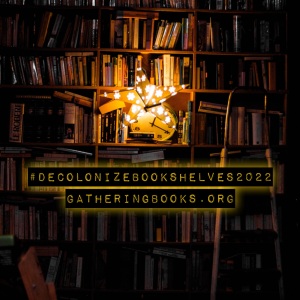Myra here.

For this year’s reading theme, we hope to feature books that fit any of the following criteria:
-
Postcolonial literature and/or [pre/post] revolutionary stories
-
Stories by indigenous / first-nation peoples / people of colour
-
Narratives of survival and healing, exile and migration, displacement and dispossession
-
Books written or illustrated by people who have been colonized, oppressed, marginalized

I, Tituba, Black Witch Of Salem [Amazon | Book Depository]
Written by Maryse Condé Translated by Richard Philcox Foreword by Angela Y. Davis Afterword by Ann Armstrong Scarboro Published by University Of Virginia Press (2009, first published 1986) ISBN: 9780813927671 (ISBN10: 0813927676). Original Title: Moi, Tituba, sorcière… Literary Award: Grand Prix Littéraire de la Femme (1986) Bought a copy of the book. Book photos taken by me and edited using an iPhone app.
I can no longer recall exactly how I came to learn about I, Tituba, Black Witch Of Salem – but I am glad to have been led to this deeply disturbing and unforgettable story. It is an unapologetically sensualized and fierce re-assertion of one’s forgotten existence in this fictionalized narrative of a Black slave witch in the history of the Salem trials.
In Angela Y. Davis’s Foreword, she noted the parallels between her invisibility as a Black woman living in contemporary times – and Tituba, Black Witch of Salem:
Tituba looked for her story in the history of the Salem witch trials and could not find it. I have looked for my history in the story of the colonization of this continent and I have found silences, omissions, distortions, and fleeting, enigmatic insinuations. Tituba’s quest for recorded evidence of her existence as a living, feeling, loving, active individual, who as as much a part of the Salem witch trials as her codefendants of European descent, leads her to a belittling, cursory allusion: ‘Tituba, a slave, originating from the West Indies and probably practicing ‘hoodoo.’ She counters this footnote that condemns her to insignificance with a strong, self-affirming ‘I, Tituba… Witch.'(p. xi)
This is not an easy read – not so much because of the language (which I find to be beautiful) – but because of the theme it fearlessly tackles. It comes with what is commonly referred to readers now as “trigger warnings” with its depiction of rape, abuse, violence. Yet Condé managed to imbue Tituba’s voice with dignity, honor, and grace. I especially liked the parts when Tituba looked at her White oppressors with disdain – even while they try to dehumanize her and render her invisible. This is seen in one of the quotes below (p. 24):

This shifting of gaze is what I find to be most empowering in Conde’s fictionalized account of Tituba’s story. Viewing the colonizers and the oppressors from her piercing and unflinching gaze makes me stand up a little taller, my chin raised a little higher. I was especially amused by how Tituba interpreted White people’s perpetual claim of being damned, the notions of morality that verge on self-righteousness – at least as defined through religious tenets:
Perhaps it’s because they have done so much harm to their fellow beings, to some because their skin is black, to others because their skin is red, that they have such a strong feeling of being damned? (p. 47)
Amen! Maryse Conde also touched on intersectionality, with her acknowledgment that her lover, John Indian, Black as he was, did not necessarily suffer from the hands of White oppressors and slave-masters in the same way that she did:
was, did not necessarily suffer from the hands of White oppressors and slave-masters in the same way that she did:
The color of John Indian’s skin had not caused him half the trouble mine had caused me. Some of the ladies, however Puritan they might be, had not denied themselves the pleasure of flirting with him. (p. 101)
In the same way that Tituba did not find the need to apologize for being a sensual woman who enjoys having sex with her lover, John Indian – she also did not find anything heroic in being a slave, and articulated how, if she were given a choice at birth, would rather be one of the conquerors instead:
Life would only be a gift if each of us could choose the womb that carried us. But to be deposited inside a wretch, an egoist, or a self-centered bitch who makes us pay for the misfortunes of her own life, or to belong to the cohort of the exploited and humiliated, those whose name, language, and religion are imposed upon them, oh what a martyrdom!
If one day I am born again, let it be in the steely army of conquerors! (p. 120)
Over and above the story itself, I found the Afterword that includes an interview with Maryse Conde by Ann Armstrong Scarboro especially illuminating. I am looking forward to reading Maryse Conde’s Segu (Amazon | Book Depository) which is included in This Is The Canon: Decolonize Your Bookshelf In 50 Books. I am sure it will prove to be an equally powerful read.

#DecolonizeBookshelves2022 Update: 8 out of target 100
January 27, 2022 at 06:30AM Myra Garces-Bacsal


